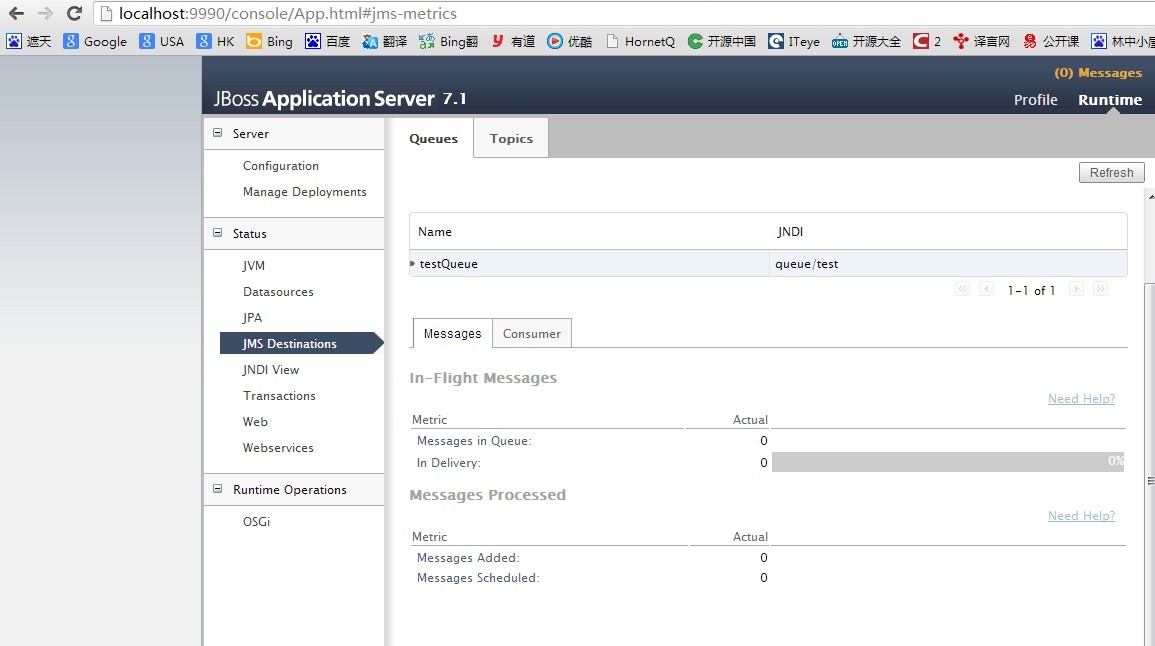最近温习了下EJB和JMS,整理了下思路,和大家分享下P2P和Pub/Sub的demo

;JBoss 7 集成了HornetQ,JMS可以在HornetQ中间件运行,有时间在和大家分享关于HornetQ的文章。
1.下载Jboss 7并配置运行环境 http://www.jboss.org/jbossas/downloads
2.增加testjms用户(用以jms链接时使用),在jboss的bin目录下运行add-user.bat,如下: guest 一定要写。

3.修改启动配置文件,使用standalone-full.xml启动jboss服务器
- $JBOSS_HOME$\bin>standalone.bat --server-config=standalone-full.xml

4.例子:修改Jboss配置文件standalone-full.xml,找到hornetq-server节点,在该节点下的jms-destinations确定含有以下配置:
- <jms-destinations>
- <jms-queue name="testQueue">
- <entry name="queue/test"/>
- <entry name="java:jboss/exported/jms/queue/test"/>
- </jms-queue>
- <jms-topic name="ServerNotificationTopic">
- <entry name="topic/ServerNotification"/>
- <entry name="java:jboss/exported/jms/topic/ServerNotification"/>
- </jms-topic>
- </jms-destinations>
客户端项目用eclipse集成jboss的 j2ee项目。runtime是jboss 7.
javax.naming.NamingException: JBAS011843: Failed instantiate InitialContextFactory
User: acs doesn‘t have permission=‘SEND‘ on address jms.queue.testQueue 权限错误,需要看看:
http://www.techartifact.com/blogs/2012/10/jboss-as-7-setting-up-hornetq-jms.html#sthash.OLzvKFO6.dpbs





